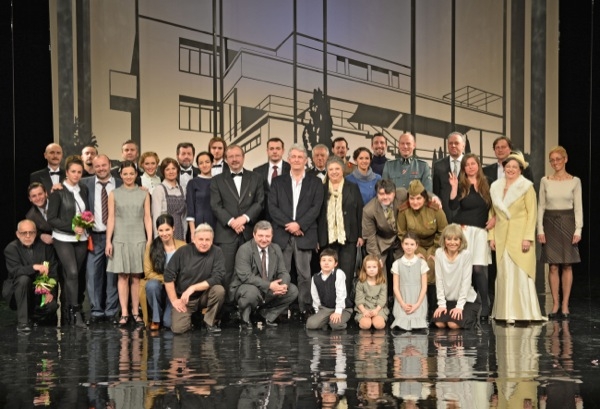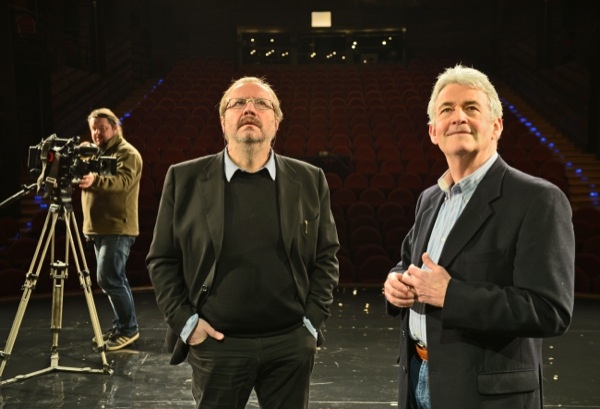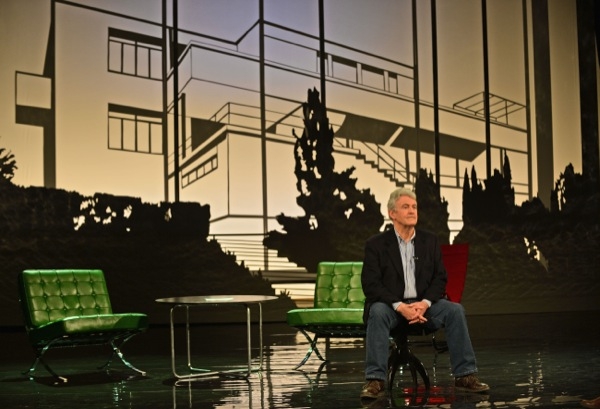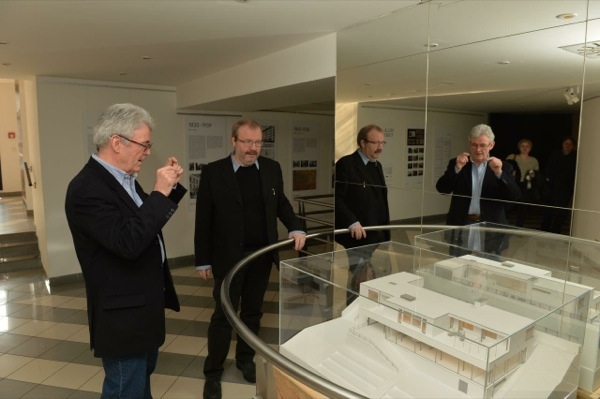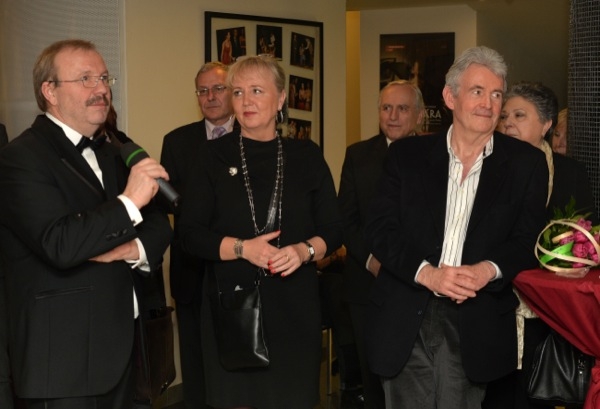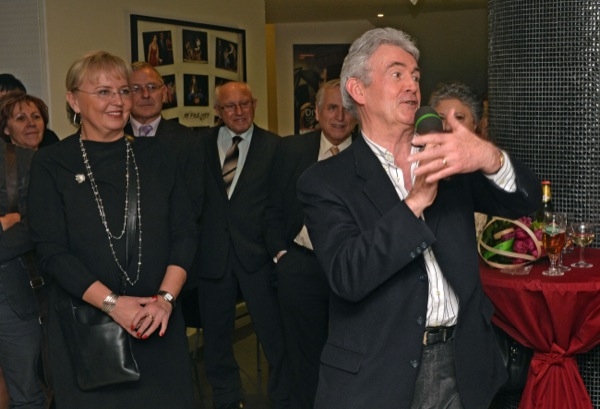On Saturday 7 February 2015, the drama stage of the Brno City Theatre saw the world premiere of the stage adaptation of the bestselling novel by Simon Mawer, The Glass Room. The author of the staging and director of the production is Stanislav Moša.
The Novel by Simon Mawer (b. 1948) The Glass Room, inspired by the Tugendhat Villa in Brno, was published in 2009 in the UK and was nominated for the prestigious Man Booker literary award. The Czech translation was published in the same year and met with great response, not only with literature lovers. The indifferent “City” from the English original turned into Brno in the Czech translation. Facts associated with Brno and historical events, but also personalities of pre-war and post-war Czechoslovakia become all the more realistic. Emotions of Czech readers then undoubtedly resonate much more intensely. This is even more impressively true about the story of the novel’s main characters, the couple Liesel and Victor Landauer who had a “glass dream” built in Brno, designed by the architect character, Rainer von Abt.
Experts and architecture lovers will immediately discover that the archetypes of the main characters are Greta and Fritz Tugendhat and the renowned architect Ludwig Mies van der Rohe – but there the similarity with the novel’s figures, however “coincidental”, begins and ends. Yet, the similarity of the novel’s Landauer house with the real Villa Tugendhat, and also with some historical context associated with this world famous building is not entirely coincidental.
Writer Jiří Kratochvil in his review of Mawer’s novel (A2 magazine, no. 26, 2009) pointed out that the Villa Tugendhat is described here with rare feeling for its architectural uniqueness. At the same time, however, he emphasized that it is primarily a novel of fiction, not fact. Even the author himself points this out in his introductory remarks. In spite of that, Mawer’s novel is still often perceived as a story of real people – builders of the villa who just have just changed names. That is not so. The real story of the Tugendhats and their relatives was different, although it partially happened in the environment of the “City” and the “glass room”.

